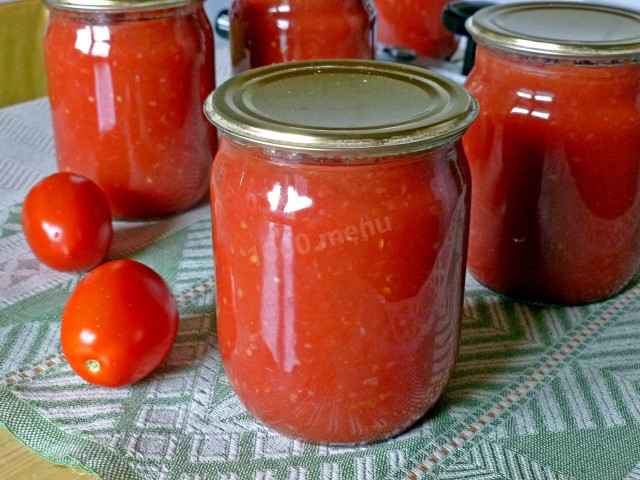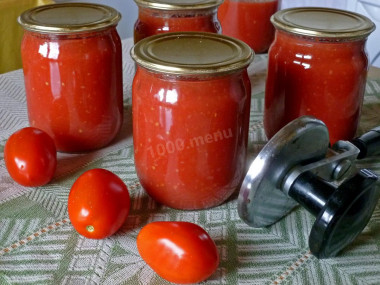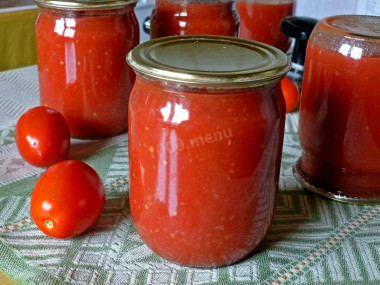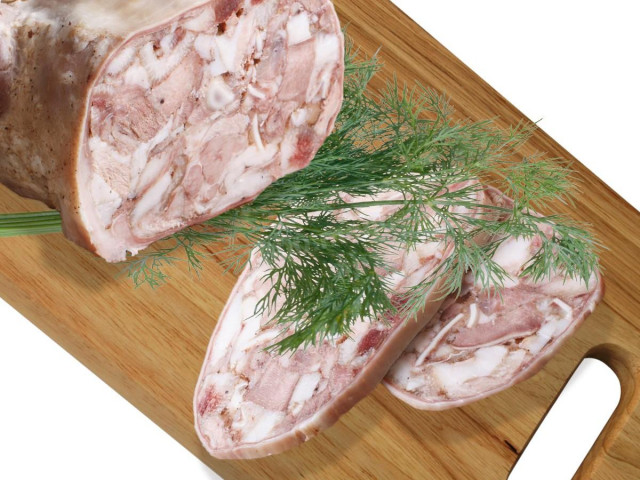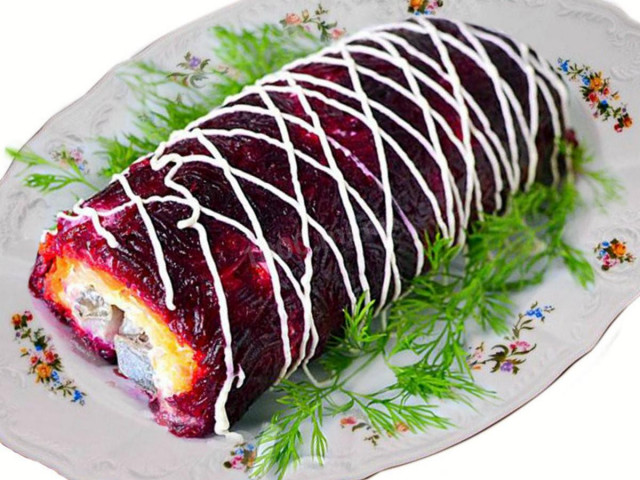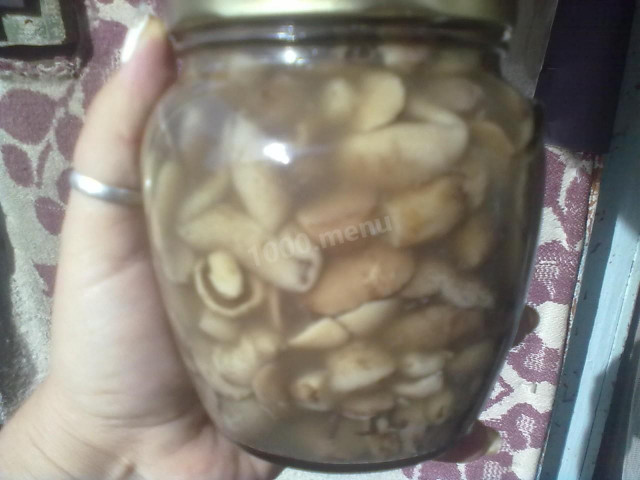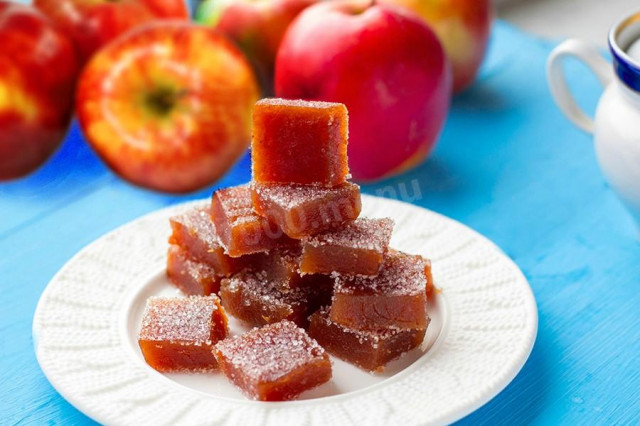Composition / ingredients
Step-by-step cooking
Step 1:
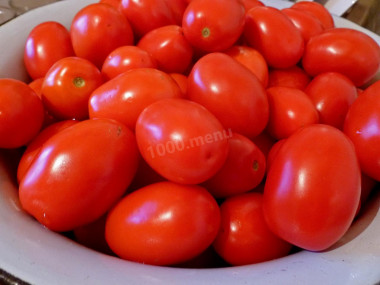
How to make tomato juice for winter? Tomatoes for juice are suitable for any variety. I have a kind of cream, ripe, dense, fleshy. Wash the fruits well with cold water. From 3 kg of tomatoes, the output is 5 half–liter cans.
Step 2:
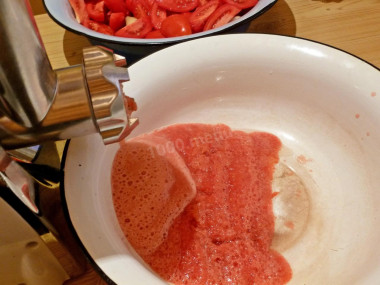
Cut tomatoes into quarters, remove the place of the stalk and pass through a meat grinder. The grid for grinding tomatoes in a meat grinder needs to be installed the smallest. Otherwise, you will have to skip twice.
Step 3:
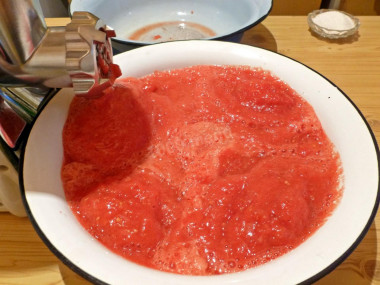
We will get tomato mass, but not juice yet, since it is quite airy after grinding.
Step 4:
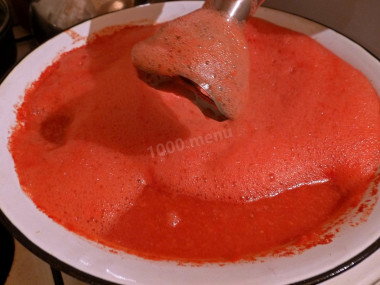
Next, put a bowl of tomato mass on the fire and, while heating, process it with an immersion blender. You need to achieve the most homogeneous pulp and try not to splash the whole kitchen, be careful!
Step 5:
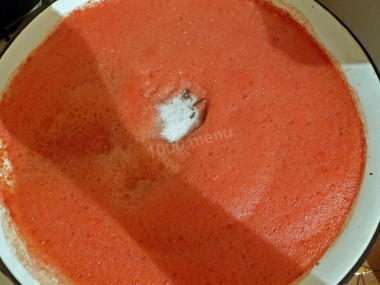
Bring the tomato mass to a boil, turn down the heat, add salt, sugar and clove grains for a spicy flavor. Cook, stirring continuously, until all the foam has dispersed. It should be boiled in the form of pulp. It will take about 15-20 minutes to cook the juice.
Step 6:
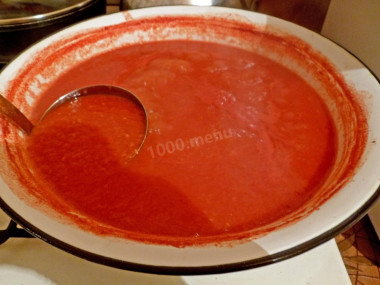
When the foam leaves the surface, the tomato juice is ready and it can be poured into jars.
Step 7:
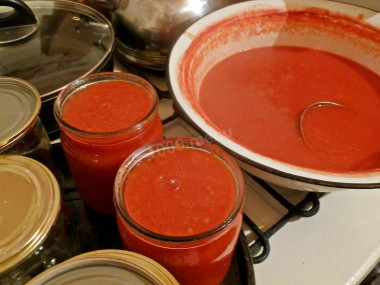
Cans and lids for rolling tomato juice should be sterilized in advance. To speed up the process, the cans can be sterilized in the microwave, and the lids can simply be boiled. Pour the hot juice into sterile jars and roll up immediately.
Step 8:
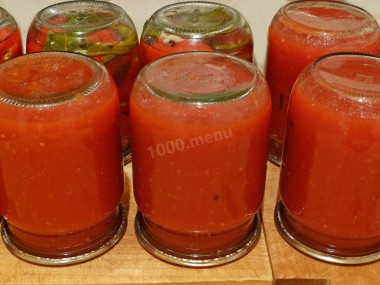
Roll up the cans of tomato juice upside down. Check the tightness and leave them standing there until they cool down completely. After that, put it in a dark place for storage for the winter. Store jars of tomato juice at room temperature.
Remember that spices such as salt, sugar, as well as vinegar and its substitutes are used in recipes for winter preparations not only for taste, but primarily as preservatives. Therefore, it is impossible to reduce the concentration of salt and sugar, as well as replace vinegar (essence) with weaker concentrations than indicated in the recipe, otherwise vinegar (salt / sugar) will not show their preservative properties and the workpiece will be spoiled.
How to calculate the number of cans, why banks explode and how to avoid it, as well as secrets and life hacks, read the article about preparations for the winter.
Caloric content of the products possible in the composition of the dish
- Tomatoes - 23 kcal/100g
- Carnation - 323 kcal/100g
- Granulated sugar - 398 kcal/100g
- Sugar - 398 kcal/100g
- Table salt - 0 kcal/100g

